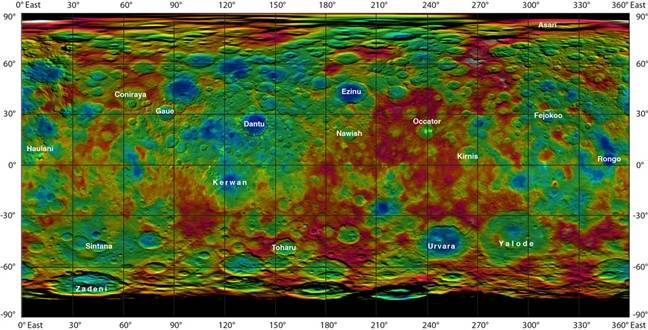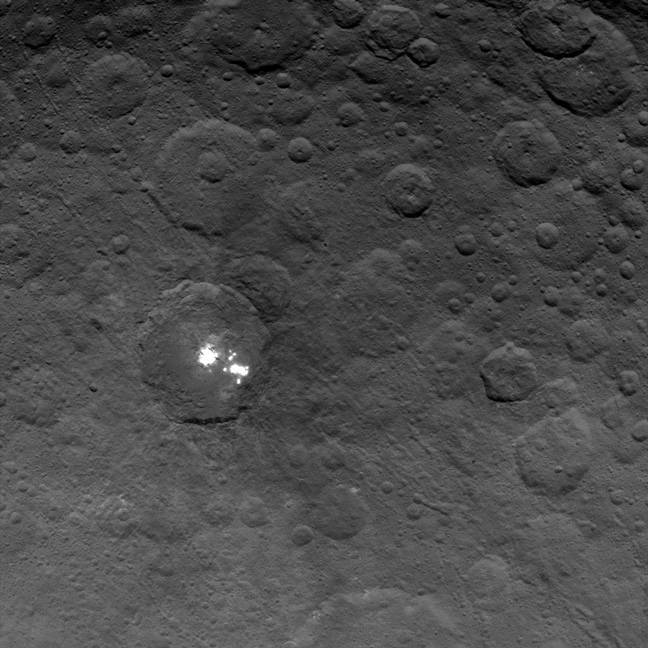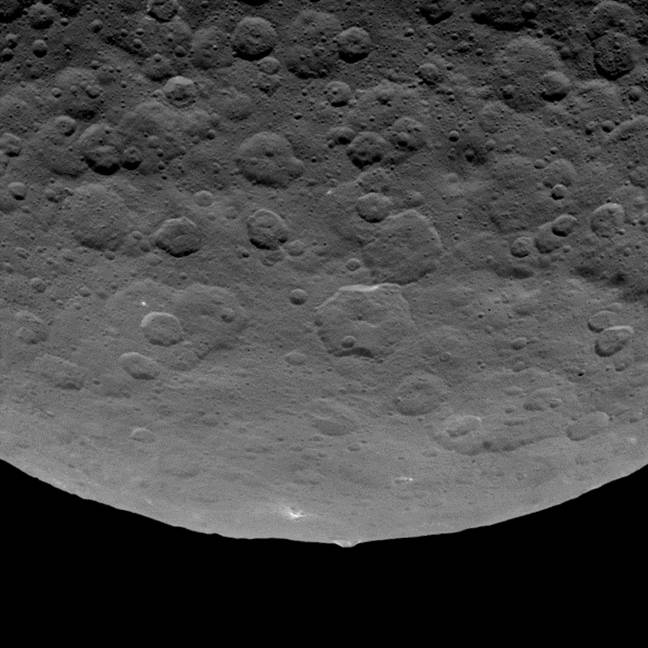This article is more than 1 year old
Three-mile-high pyramid found on alien dwarf world, baffles boffins
Weird pimple on Ceres remains unnamed and unexplained
Pics and video When it comes to probing dwarfs, NASA's New Horizons Pluto probe has been hogging the limelight.
But the Dawn spacecraft orbiting tiny Ceres, which is hidden in the asteroid belt between Mars and Jupiter, is back in operation – and has sent back the first full maps of the sort-of planet.
Crucially, the latest pictures fail to shed any more light on the mysterious pyramid-like structure previously spotted on the surface.
The snaps sent back to Earth show that the dwarf world Ceres has a surprisingly varied landscape, with 9 miles (15 kilometers) of variance between the tallest mountains and the lowest crater bottoms. Certainly the landscape isn't as geologically interesting as Pluto, but Ceres is similar to other bodies spotted in the Solar System.
"The craters we find on Ceres, in terms of their depth and diameter, are very similar to what we see on Dione and Tethys, two icy satellites of Saturn that are about the same size and density as Ceres. The features are pretty consistent with an ice-rich crust," said Dawn science team member Paul Schenk, a geologist at the Lunar and Planetary Institute, Houston.

Insert deity of choice here
The mapping project has also given the International Astronomical Union the opportunity to name features on the surface. The latest batch of 18 names is a very multicultural bunch, devoted largely to Earth-based deities.
They include Fejokoo, a Nigerian god who supplied the yams, Coniraya (who apparently inspired the Incas to create terraced farming and irrigation), and Kirnis, the Lithuanian deity who guards cherry trees.

The mystery of the Occator crater
But the most noticeable feature of Ceres – the 60 mile (90 kilometer) impact crater containing the bright spots that have caused sometimes batshit speculation of alien spaceports – has been named after Occator, the Roman god of harrowing soil.
There's still no official word as to what is causing the bright spots to appear at the base of Occator, but the most likely answer is ice left over from an impacting body, or that has formed from moistness within Ceres. Last month it was revealed that there is offgassing from the bright spots, which would tie in with the ice theory.

Pyramid or pimple
One prominent feature that hasn't received a name yet, and is still baffling boffins, is the mysterious mound spotted on Ceres that some have called a pyramid. The flat-topped feature rises about 3 miles (5 kilometers) from the surface of the dwarf planet, but no sign of a stargate has been spotted – yet. ®
